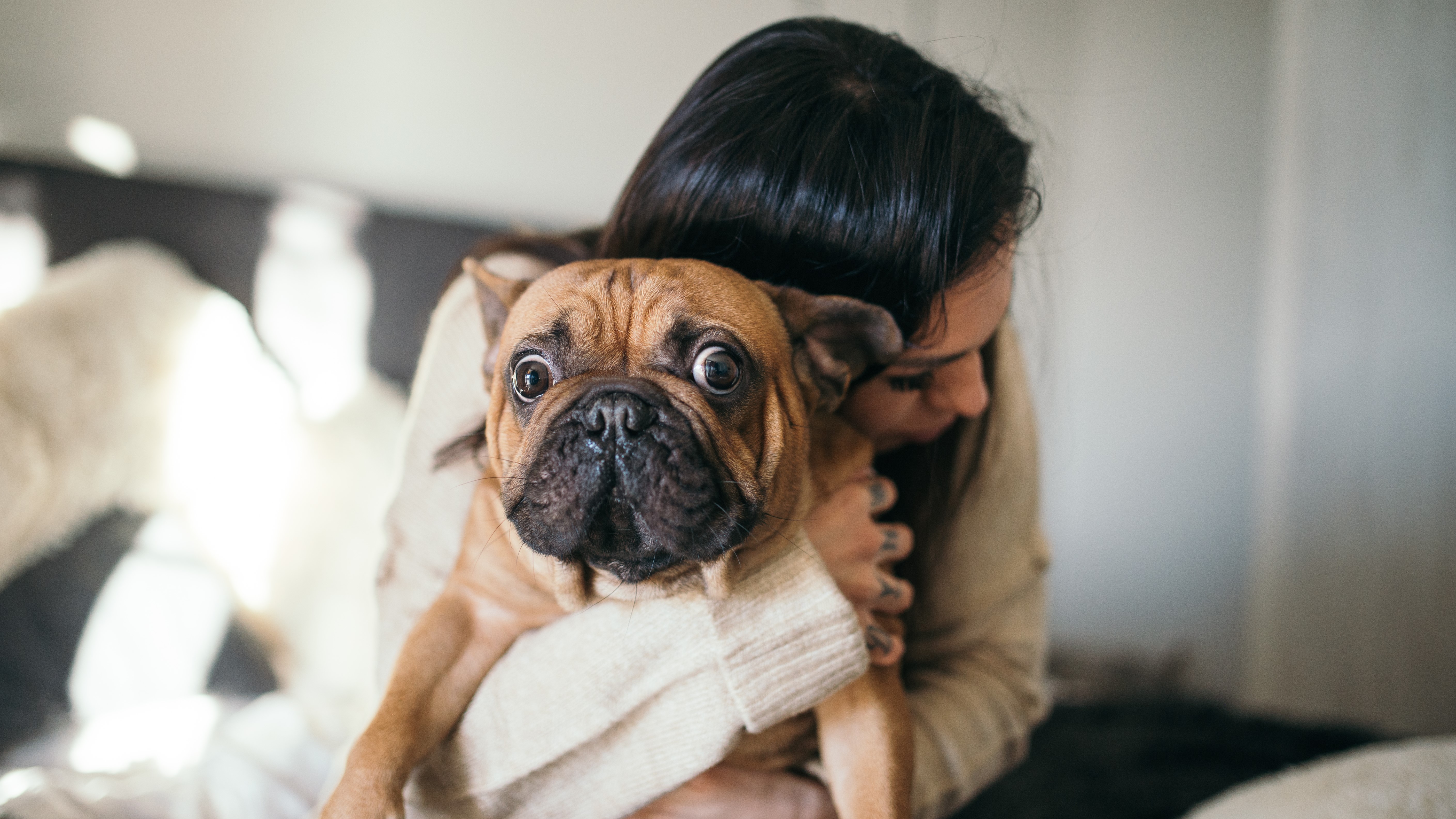Trainer reveals there's a correct way to stroke our dogs, and we've been getting it all wrong!
If your dog is nipping or biting you when you pet them, you need this trainer's genius three second rule

There's nothing we humans love more than cuddling and stroking our dogs. Those sweet eyes and the soft fur can be utterly irresistible, but what if we were to tell you that while your canine companion likely wants your company, they may not always want hands-on contact?
We're guessing that news might leave you feeling disappointed, and yet it's really important, as dog owners, that we understand the ways in which our pups communicate to us that they're uncomfortable with the level of affection we're showering them with.
While almost all of our fur friends will enthusiastically accept one of the longest lasting dog chews, they'd sometimes prefer to sit quietly undisturbed beside us as opposed to being petted or hugged.
So, how do you know if your dog isn't happy with your displays of affection? Well, according to trainer and behaviorist Joy Knowles, it's worth being aware of the Canine Ladder of Communication that was originally developed by Dr. Kendal Shepherd back in 2001.
The ladder starts at green, which is where a dog will politely request you to stop touching them. These signs include behaviors such as yawning, blinking, nose licking, turning the head or body away, and walking off.
If those signaling attempts prove unsuccessful, a dog will escalate their requests to amber behaviors, such as putting their ears back, standing crouched with their tail tucked under, stiffening their body, and staring.
Finally, if all of those warning signs go unheeded, a dog may resort to growling, snapping, and biting - red behaviors that they're sure a human will understand. If as pet parents we don't stop when our dog is engaging in gentle behaviors at the bottom of the communication ladder, Knowles says we're literally training them to bite us.
Get the best advice, tips and top tech for your beloved Pets

However, sometimes the green behaviors on the ladder can be subtle and so Knowles suggests a simple three-second rule that will allow you to quickly and easily test if your dog is enjoying the way you're petting them:
"Try stroking your puppy for a maximum of 3 seconds – then take your hands off, completely," says Knowles. "Watch your puppy carefully as you do this; how many gestures did your puppy use from the Canine Ladder of Communication? Video it – I bet you’ll spot even more if you re-watch the footage! For example:
- Did your puppy’s eyes widen or stare
- Did pup turn his head away?
- Did she get more wriggly?
- Does pup move away when you stop?
If so, your dog is signaling that – at this moment – s/he does not want to be stroked/petted, etc. They love you but don't want your hands on their fur just now, thank you! So, an easy way to stop puppy biting is to TOUCH your puppy LESS! Or, at the very least give your puppy a choice in the interaction by introducing Consensual Contact using the Three Second Game."
Knowles says that in her experience when we do less petting, dogs do a lot less biting - so if you have a puppy or adult dog who tends to nip, snap or bite, it's well worth implementing the three-second rule and seeing if that puts a stop to the behavior.
If you try the three-second rule and see no change in your dog's behavior, we recommend reaching out to a professional trainer who will be able to offer you 1:1 support and guidance.
For more great training tips, check out our guide to how to crate train a dog.

Kathryn is a freelance writer who has been a member of the PetsRadar family since it launched in 2020. Highly experienced in her field, she's driven by a desire to provide pet parents with accurate, timely, and informative content that enables them to provide their fur friends with everything they need to thrive.
Kathryn works closely with vets and trainers to ensure all articles offer the most up-to-date information across a range of pet-related fields, from insights into health and behavior issues to tips on products and training.
When she’s not busy crafting the perfect sentence for her features, buying guides and news pieces, she can be found hanging out with her family (which includes one super sassy cat and a kitten), drinking copious amounts of Jasmine tea and reading all the books.
She has written for a range of publications, including Fit&Well, Top Ten Reviews, LiveScience, Goodto, and Product Hunt.
